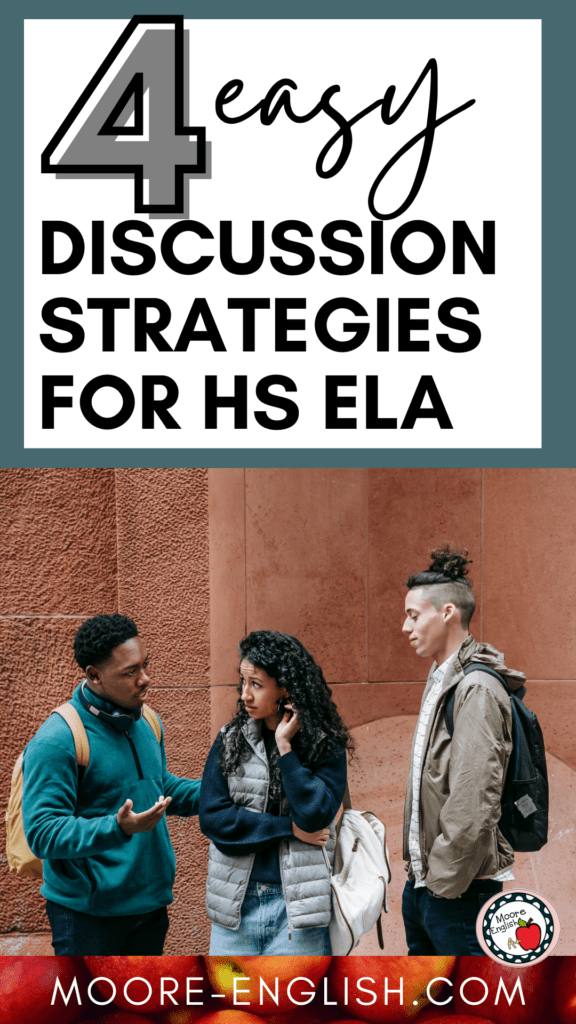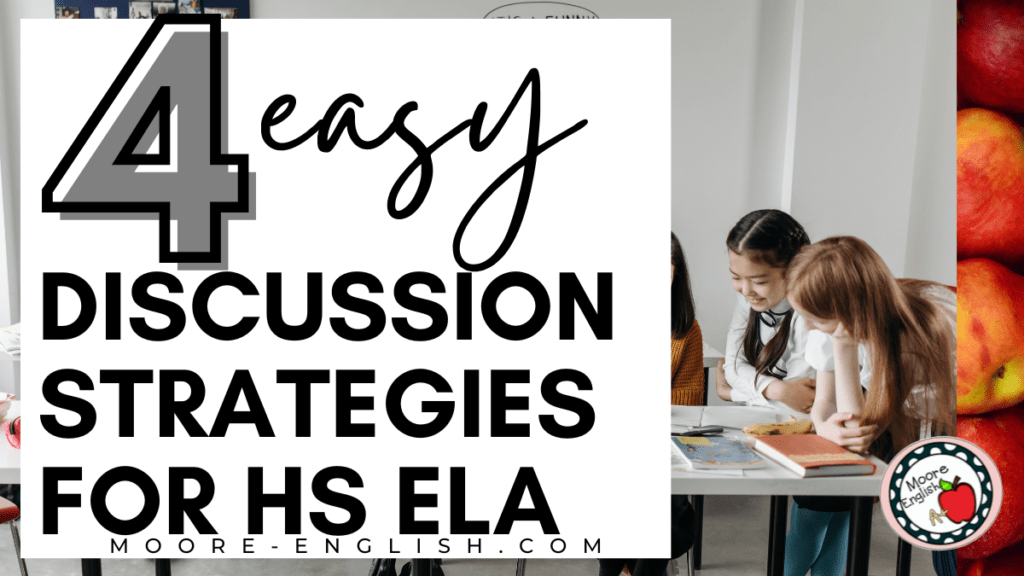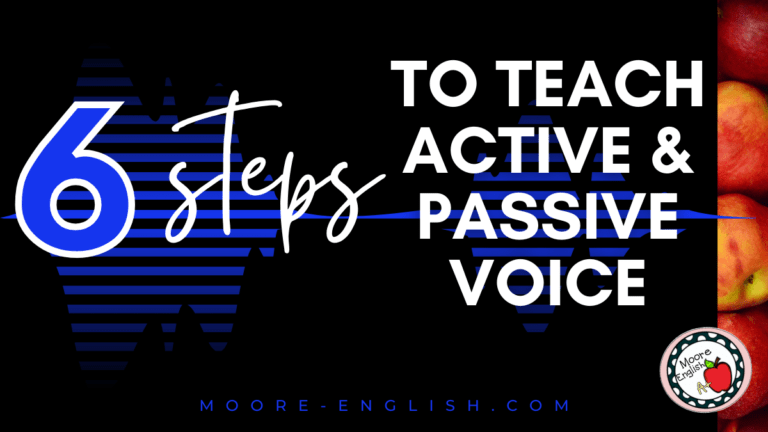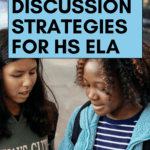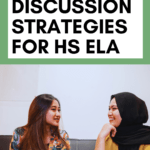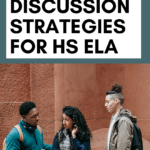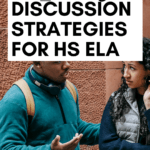Choosing classroom discussion strategies can be tricky because discussion is a cornerstone of reading literature. Each time students interact with a text, they engage in a conversation that began long before they will picked up the title and will continue long after graduation. At times, that conversation is deeply personal, taking the form of margin notes or journal reflections.
However, my favorite discussion strategies engage students across the board. Students make unique (and sometimes unexpected) contributions during classroom discussion. For this reason, teachers have to carefully choose discussion strategies. Some discussion strategies can require a lot of prep work, but I don’t have time for that! So I wanted to share four effortless but meaningful discussion strategies perfect for high school ELA!
This post this post may contain affiliate links. Please read the Terms of Use.
Preparing for Discussion
Before you choose a discussion strategy, it’s important to establish the best classroom culture for discussion. If students are too shy, too afraid, or too reticent, then your discussion with flop! Here are some strategies to pave the way for successful classroom conversation:
- Ask students to establish discussion norms and consequences for violating those expectations.
- Then, ask each student to prepare 2-3 discussion topics or questions. Throwing out a new question is often the best way for a reluctant student to engage.
- Choose a seating arrangement. If your physical space is not conducive to discussion, then you’re leaving obstacles in your way. Train students to shift desks and chairs as needed.
- End with a moment of reflection. Encourage students to reflect on what worked in the discussion and what they need to work on for next time! Check out more ideas for beginning and ending discussion successfully!
Speed Dating
Speed dating is one of my favorite classroom discussion strategies because it encourages students to move and engage with a variety of partners. For speed dating, arrange desks in a manner that provides students with a clear “path.” This will help them move smoothly from partner to partner. Alternatively, students can stand in a circle with one partner facing inward and the other facing outward. Each time students switch, one circle takes a step to the right.
I use the speed dating strategy when I want students to chat with a variety of classmates. I almost always use this strategy after introducing a new anticipation guide.
Snowball Discussion
Like speed dating, a snowball discussion provides students with a chance to chat with a variety of classmates. For this discussion, I like to take students to an open collaboration area or courtyard where there are no chairs. Otherwise, it’s too messy with moving and scraping chairs.
In a snowball discussion, students activate prior knowledge by journaling in response to a prepared prompt. After a specific amount of time, students share their response with a partner. From there, students generate questions based on their journal responses.
After a set amount of time, the partnership “snowballs” to become a group of four. They use their recently generated questions to lead a new discussion. I love the variety of questions this strategy generates. No two groups have the same conversation!
Then, each group “snowballs” again to become a group of eight. After their discussion of eight, everyone comes together in a whole group “snowball.”
Typically, my timing for this activity is as follows:
- 3 minutes to journal
- 3 minutes in partnerships
- 4 minutes with groups of 4
- 8 minutes with groups of 8
- 8-10 minutes as a whole group
Of course, the timing can change as needed, but this pattern has served me well over the years! (I use these kitchen timers to keep track of time.)
Silent Discussion Strategies
One of the most challenging parts of a classroom discussion is engaging all learners, including those students who are shy, introverted, or otherwise reticent. When this happens, a silent discussion can be an ideal way to break the ice!
I use these silent discussion templates. Since these templates are fully editable, I can customize how many questions students ask and how many they answer. I also love that I can use the slidedeck across classes, so students can respond to questions from students in other periods. This is also an ideal activity to leave with a substitute teacher!
My Favorite Discussion Strategy
At the end of the day, my favorite discussion strategy is a good old fashioned Socratic Seminar. The conversations in this environment always impress me. Here are some of my tried-and-true Socratic Seminar “rules”:
- To participate, students must complete some kind of activity, perhaps a journal, a reading, a set of annotations, etc.
- Students must sit in a circle so everyone feels like they are included. I also sit in the circle with students so we all appear to be on an even playing field.
- Sometimes a “talking stick” can help students manage their discussion. In my classroom, we often use a plush toy. However, this is also something I let students work through before offering a suggestion.
- I do not help dig students out of awkward silence. Instead, I sit quietly and wait for students to work out how to generate discussion. At times, this can be extremely painful, but it is also an important part of developing speaking and listening skills.
- During discussion, I take notes and monitor who is participating. The notes come in handy later if anyone questions our discussion. After discussion, I use the participation notes to compliment the leaders and gently encourage students who did not participate.
What discussion strategies do you recommend?

